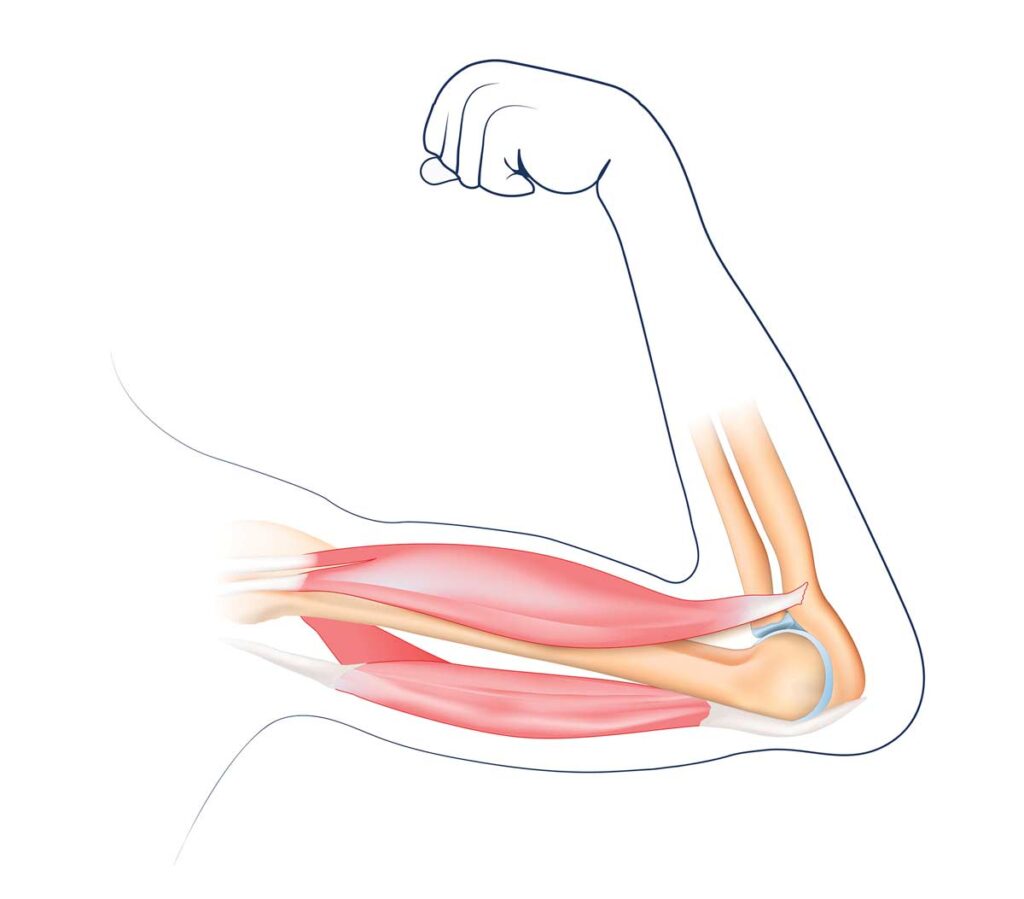
Sarcopenia is a progressive disorder characterized by low muscle strength, quality, and quantity. Low muscle strength indicates probable sarcopenia, and low muscle quality and quantity confirms this diagnosis. In severe cases, low physical performance is present as well.1 Sarcopenia typically develops in people aged 60 years or older, with prevalence increasing among those aged 80 years or older. It affects male and female individuals equally.2 Symptoms of sarcopenia include muscle weakness, loss of stamina, walking slowly, difficulty with daily tasks, poor balance, and falls.1,3
A reduction in the size and number of type II muscle fibers is often observed in those with sarcopenia. Several other mechanisms that seem to contribute to sarcopenia have been identified, including reductions in the serum levels of age-related anabolic hormones (e.g., testosterone, insulin-like growth factor-1 [IGF-1]), as these hormones are linked to muscle development, maintenance, and rejuvenation; insulin resistance, which has an inverse association with skeletal muscle mass; age-related neurodegeneration, as the neurological system plays a role in muscle fiber recruitment; and increased inflammatory markers (e.g., interleukin-6, C-reactive protein, tumor necrosis factor-alpha), which can affect skeletal muscles.2
Individuals can develop primary or secondary sarcopenia. Primary sarcopenia is age-related, with no other identifiable contributing causes, whereas secondary sarcopenia has other contributing causes, which may or may not include aging; other causes include inflammatory conditions (e.g., organ failure, malignancy), physical inactivity, and malnutrition.1
Sarcopenia is associated with various chronic diseases, including diabetes, chronic heart failure, chronic kidney disease, chronic obstructive pulmonary disease, cancer, and human immunodeficiency virus.2 Sarcopenia is linked to the development of mobility disorders, cognitive impairment, increased risk of falls and fractures, loss of independence (particularly in those >90 years of age), and impaired ability to perform daily activities.1,2 Additionally, there is an increased risk of complications, morbidity, and mortality in patients with sarcopenia undergoing major surgeries.2
Prevention and treatment
Sarcopenia can be prevented and treated with the proper nutrition and physical activity. Resistance training is particularly beneficial for strengthening muscles, which can thus prevent/reverse sarcopenia.2,4 Walking can also help increase muscle mass.4
Increasing protein consumption is recommended for the prevention and treatment of sarcopenia.2,4,5 Having about 20 to 35g of protein per meal or 1.0 to 1.2g/kg of body weight per day are both recommended.2 One review notes that it is unclear whether low protein intake alone in healthy older adults (<70 years of age) is associated with age-related loss of muscle function;6 however, increased protein consumption combined with physical activity may help prevent and treat sarcopenia.2,6 Likewise, creatine supplementation combined with resistance training can improve upon the benefits of resistance training alone, thereby potentially protecting against sarcopenia.4
Currently, the evidence on vitamin D intake and improvements in muscle mass or strength is inconclusive.6
Research indicates that omega-3 fatty acids might protect against reductions in muscle mass5 and improve muscle strength.7 However, these findings are limited by study heterogeneity and small sample sizes. Further research is needed to both elucidate the role of omega-3 fatty acids in sarcopenia and determine the most effective dosage in preventing and treating this condition.5,7
Sources
- Cruz-Jentoft AJ, Bahat G, Bauer J, et al. Sarcopenia: revised European consensus on definition and diagnosis. Age Ageing. 2019;48(1):16–31. Erratum in: Age Ageing. 2019;48(4):601.
- Ardeljan AD, Hurezeanu R. Sarcopenia. Updated 4 Jul 2023. In: StatPearls [Internet]. StatPearls Publishing; 2024 Jan–.
- Cleveland Clinic. Sarcopenia. Reviewed 3 Jun 2022. https://my.clevelandclinic.org/health/diseases/23167-sarcopenia. Accessed 23 Jan 2024.
- Thorpe M. How to fight sarcopenia (muscle loss due to aging). Healthline. 25 May 2017. https://www.healthline.com/nutrition/sarcopenia. Accessed 23 Jan 2024.
- Ganapathy A, Nieves JW. Nutrition and sarcopenia-what do we know? Nutrients. 2020;12(6):1755.
- Robinson S, Granic A, Cruz-Jentoft AJ, Sayer AA. The role of nutrition in the prevention of sarcopenia. Am J Clin Nutr. 2023;118(5):852–864.
- Therdyothin A, Phiphopthatsanee N, Isanejad M. The effect of omega-3 fatty acids on sarcopenia: mechanism of action and potential efficacy. Mar Drugs. 2023;21(7):399.




